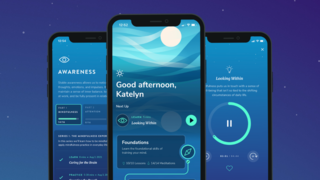The United States is experiencing a mental health crisis. The prevalence of mental illness and emotional symptoms of distress generally have been on the rise for many years, but the COVID-19 pandemic has caused a surge. Emotional problems are particularly increasing among adolescents and young adults, especially among females and especially among individuals who identify under the LGBTQ umbrella.
For example, in the recently published Healthy Minds Study of over 350,000 college students representing 373 American colleges and universities, over 60% met criteria for one or more mental health problem. Since 2013, symptoms of depression have increased 135%, anxiety 110%, eating disorders 96%, and thoughts of suicide 64%. Overall flourishing also decreased in this timeframe by 33%.
Mental illness isn’t just about personal suffering, although it clearly includes this. Mental illness also impacts many kinds of relationships, the ability to work effectively, and the success of students. For instance, depression doubles the risk of a college student dropping out without graduating. To the extent that individuals are unable to fulfill their roles in these areas, our country and world will suffer as well.
Part of this mental health crisis stems from the lack of access to evidence-based help. Waiting lists have lengthened, hospital beds are short, and the ability to see a mental health professional regularly has been diminished. Expert help is hard to come by and practitioners are burned out. Organizations that could supply mental health support – such as business, colleges, and religious organizations – do not have the staffing or training to do so.
The lack of access to good mental health care also demonstrates a societal inequity. In the Healthy Minds Study mentioned above, students of color were the least likely to use mental health services. Although Arab American students had experienced a 22% increase in the prevalence of mental health problems, they were 18% less likely to access treatment, compared with 2013. This gap in mental health access across the races parallels the gap in achievement often demonstrated in work and school across the races, and may play a causal role.

Although the availability of evidence-based psychotherapy and medicine needs to be improved, especially for individuals with serious illness, other options also may be increasingly needed. The Association for Behavioral and Cognitive Therapies provides a list of recommended self-help books based on evidence-based cognitive-behavioral principles at their website. Digital psychoeducation programs based on cognitive-behavioral principles (such as Learn to Live) are increasingly offered through partnerships with health plans, businesses, and colleges. Phone apps based on mindfulness techniques (such as the Healthy Minds Innovations app) are offered for free to anyone. In general, research on these options suggest they reduce symptoms as much as traditional psychotherapy and medication, perhaps especially for those who are mildly or moderately distressed.
Ultimately, a worthy goal for our mental health system is to create multiple webs of research-based support for individuals and communities, to help individuals improve their functioning in ways accessible to them. Self-help books, digital psychoeducation programs, and apps may not replace psychotherapy and medicine, but they can be used for prevention or used as a first-line of support, especially when wait lines are so long that no other kind of treatment is possible. With technology and options only improving in these areas, we may be on the brink of a breakthrough in mental health care.
